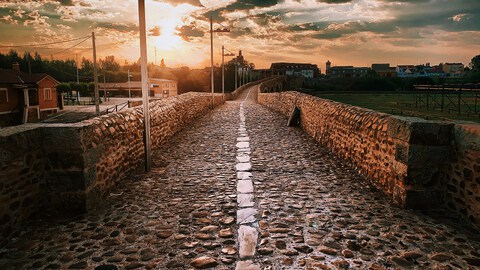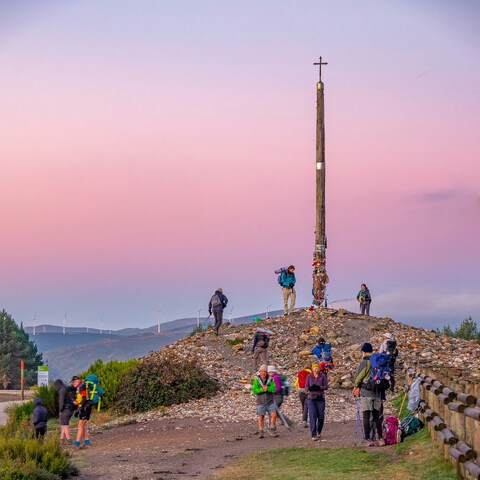Explore the cultural sites
Discover the rich history and vibrant culture of the Camino de Santiago. You will journey through stunning towns, ancient churches, and significant monuments.
Not just a pilgrimage
The Camino de Santiago is not just a pilgrimage; it's a journey through history, culture, and human connection. As you traverse its paths, you'll find yourself weaving through an array of stunning towns, ancient churches, and significant monuments, each telling its own unique story. Taking the time to explore these cultural and historical sites can deeply enrich your experience, offering insights into the local traditions and customs that have shaped these regions for centuries.
Historic towns and villages
Each town and village along the Camino has its own character and history. Places like Saint-Jean-Pied-de-Port, the starting point for many on the French Way, offers medieval architecture and cobbled streets, providing a tangible sense of the past as you begin your journey. As you move through regions like Navarra and Galicia, take the opportunity to wander through their markets, sample local cuisine, and converse with residents. These interactions provide a glimpse into the modern-day culture that is deeply rooted in history.

Walking the Camino is like walking through history, one step at a time.
Majestic churches and cathedrals
The route is dotted with an array of sacred sites, from small chapels to grand cathedrals, each with its own story. The Cathedral of Santiago de Compostela, the ultimate goal for many pilgrims, is a masterpiece of Romanesque art with later Gothic and Baroque additions. Along the way, don’t miss the chance to visit lesser-known churches like the Iglesia de Santa María in Los Arcos or the Cathedral of León, with its stunning stained glass windows. These sacred spaces not only offer a place for reflection but also showcase the artistic and spiritual heritage of Spain.
Monuments and historical markers
Throughout the Camino, monuments and markers recount the pilgrimage's long history. The Iron Cross (Cruz de Ferro), where pilgrims traditionally leave a stone carried from home, is a poignant symbol of the journey's personal and spiritual dimensions. Other historical markers along the route provide context about the Camino’s development through the ages and the historical figures who have traveled this path before you.

The Iron Cross (Cruz de Ferro)
Local festivals and customs
If your timing aligns, participating in local festivals can be a highlight of your journey. These events are a vibrant expression of local culture, filled with music, dancing, and traditional foods. Festivals like the Fiesta de San Fermin in Pamplona or the numerous saint’s day celebrations in small towns give insights into the community's spirit and traditions.
Museums and cultural centers
Visiting museums and cultural centers along the Camino offers educational insights into the regions you are passing through. These institutions often house important artifacts and exhibitions related to the Camino’s history and the broader cultural tapestry of the area. They serve as excellent resources for understanding the historical significance of the pilgrimage and the development of the regions it traverses.
Taking the time to explore these cultural and historical sites along the Camino de Santiago turns a physical journey into a profound exploration of history and human culture. Each site offers a new perspective, deepening your connection to the past and the present of this historic route. As you walk the Camino, remember that each step is a step through history, and each encounter is an opportunity to expand your understanding of the world.
Get ready and visit our shop
As you prepare for your transformative pilgrimage to Santiago, La Compostela's Pilgrim Shop is your one-stop destination for all your Camino needs. Whether you're a seasoned pilgrim or about to embark on your first journey, our shop is tailored to equip you for every step of the way.
In our shop, you'll find an extensive range of carefully selected items, each chosen to enhance your Camino experience. From lightweight, durable backpacks ideal for those long stretches of walking, to comfortable, moisture-wicking clothing designed to keep you cool and dry, we have everything you need to travel with ease and comfort.